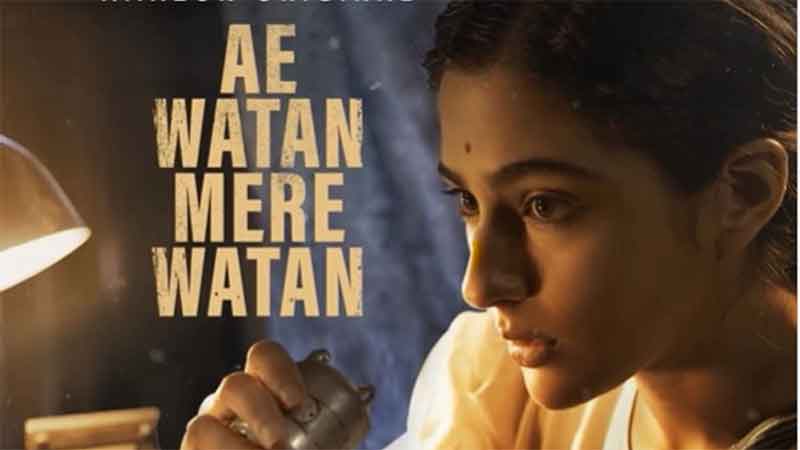
I am not a polyglot. I am unbeknownst to Urdu-my mother’s language for I am the unfortunate generation who learnt English as well as Urdu sonnets but without Urdu in its script and is one who can hardly scramble through Urdu in its Persian form, just by virtue of tying its tit-bits conforming ever to their orthographic details.
But, I had been born in Lucknow and have lived the last 48 years of life in Kashmiri Muhalla and its vicinity, the citadel where Urdu, has had its glorious time, as its residents Pandit Brij Narain ‘Chakbast’, Pandit Anand Narain ‘Mulla’ ( also a Lok Sabha MP) , Pandit Daya Shanker ‘Naseem’, Pandit Ratan Nath ‘Sarshar’ attained their highest order in Urdu world. Dozens of doctorates have been done on them in India and Pakistan etc. Janab Muhazzab Lucknowi wrote 14 volumes of Urdu dictionary which is arguably a milestone in its own right. Jafar Ali Khan ‘Asar’ Lucknowi, the recipient of Padma Bhushan is the legacy to vouch for, Nadir Agha Sahab’s Nadir-Library stood witness to hundreds of Persian, Arabic and Turkish manuscripts which attracted students from the world-over, Professor Naiyyer Masood-the proverbial Kafka of Lucknow is a testimony to the treasure-troves which this small vicinity could offer, what to refer to Meer Anees Sahab and Mirza Dabeer Sahab whose feretories , on either side of Kashmiri Muhalla, are emblematic to what all Lucknow represents.
Shoojit Sircar is a Bengali and I am sure must be known to the overdose of phonetics of alphabet ‘Sheen’ in Urdu which Bengalis are very prone to use even at the cost of alphabet ‘Seen’. The Bengali zest of ‘Sheen’ is such that once a Bengali servant informed his master from Northern India, ‘Shriya ka badshah marr gaya’ which meant ‘ The king of Syria has died’ but what he actually meant was ‘Chiriya ka bach_cha marr gaya’- ‘the baby of sparrow has passed’. Such has been the lavish use of ‘Sheen’! So, how come Shoojit Sircar could not relate to Gulabo-Shitabo-which actually it is, instead of Gulabo-Sitabo-his latest film released on Amazon Prime Video starring the stalwart Amitabh Bachchan Sahab, who played Mirza and Baankey played by Ayushmann Khurrana, who both could squabble on every pretext throughout the film.
Mehdi Agha, the son of Nadir Agha informed that he had always heard any puppeteer saying Shitabo instead of Sitabo. Mujarrab Lucknowi, son of Muhazzab Sahab, head of Urdu Department, Shia PG College echoes the same. For the record, Shitaba in Persian, according to Urdulughat.info means a paper drenched in gunpowder i.e. something which can put anything on fire, Shitaaba Daan, from Urdupoint.com means a tinderbox. Another renowned website Rekhta.org spells out Shitab as an Urdu word meaning speedy and haste. This word Shitab has been in vogue since very long as Meer Taqi Meer (1723-1810) has used it in one of his verse, ‘Sair kar Meer is Chaman ki Shitab/ Hai Khizan bhi surakh mein gul ke (Make a timely sojourn of garden/For the autumn of flowers is coming). Almost hundred years later Altaf Husain Hali (1837-1914), Ghalib’s disciple in his Nazm Hubb-e-Watan ( In love of Nation) says, BaiTh jate the jab kabhi lab-e-Aab/ Dho ke uTthe the Dil ke daagh Shitab ( Whenever we sat by the water/ We would wash the stains of heart in haste). Both the verses are available on Rekhta.Org. Hence, Shitab is a well known word in Urdu lexicon, last but not the least Professor Shams-ur-Rehman Farooqui, the living legend on Urdu literature confirms it to have always been Shitabo, but then why would Juhi Chaturvedi, a Lucknowite and writer of the film hazard such a miss? How would then Sitabo qualify? As Ghalat-ul-Aam ( A common wrong) or Ghalat-ul-Awaam ( An accepted wrong), whereas, the tragedy is that Shitabo had always been ‘said so’, in Lucknow, in the same consonant, by puppeteers from western UP or from distant Rajasthan.
The treat to watch is the prosthetic face and nose of Amitabh Sahab as Mirza Chunnan Nawab (78), his salt-and pepper beard, a round skull cap-not the Dupalli (two-parts)) Topi of Lucknow, a head-scarf and pyjamas tucked high enough for ‘visible-toes’ is through a sleight an attempt to satire on Maulana Ali Mian, whose sprawling reverence in the environs of Lucknow is much greater than anyone since independence! I am not attributing this to the innocence of the writer/director. The film is situated and located in-between Mehmudabad House, Qaiserbagh Mermaid Gates, Ameer-Ud-Daula Library and the area around Qaiserbagh, Bara Imambara and Chota Imambara, for its better part, and the timeline in 2019 as E-Richshaws are plying well across the city. Mirza Sahab, never addressed as so in the film, married Fatima Begum alias Fatto (played by Farrukh Jaffer of around 95 years), 17 years elder to him, out of greed for her Fatima Mahal (big mansion) and she for the youthfulness (sex) of Mirza. Fatima Mahal is written on top of entrance in both Hindi and Urdu script, although in Hindi it is written Phatima (sic)-showing times have changed. The film has quite a few tenants ( Syed, Mishra etc) and the leading of them is Baankey Rastogi whose father had passed and his family claimed to be in Fatima Mahal for 70 years. Baankey has three sisters and a mother who is also of shady character as she tells Mirza to meet her in Chowk, an area infamous for prostitution. But, how come she goes on to search-for her adolescent daughters until Chowk which is quite a few kms from Qaiserbagh-where she finds them dancing to Gulabo-Shitabo tunes? This is quite inconceivable.
The heavy-weight Amitabh Sahab carries the entire insipid cast on his robust shoulders with great aplomb and vitality, Baankey is shown to babble (for no useless reason) and the entire story is a crab. Frankly to stand this movie, for a Lucknowite, is not more than six minutes, as Baankey, the uncouth, firstly answers to Begum, by throwing his hands back, even when she was not talking to him, which is very ill-mannered to talk to an aging lady, that too when she is the owner and secondly when he talked the same to Mirza, a man worth his father’s age by pointing his phallus towards him. Baankey was agitated for he considered Mirza to have stolen his electricity bulb. Begum is shown suffering from amnesia and is fixated with Nehru Ji and remembers Nehru by aligning him with thieves who have had a field day-here, Sircar scored the politically correct statement.
Sircar not subtly but loudly shows that Muslim owners of even big mansions are to be loathed ‘in-a-filthy’ manner even by their own tenants-that too of Rs 30 or 70 a month. Mirza portrayal is of a man who is bereft of any human values. One who was longing for his wife to die, who indulges in stealing his wife’s money, sells her chandeliers for a pittance, digs her mansion to search for an imaginary embedded gold, even underpays the kafan (coffin) of his wife which he buys in anticipation to her death and forges her thumb impression to gulp her property. No Muslim could have stooped so low as shown to be Mirza who makes the two-small innocent sisters of Baankey scale down from a rickshaw, which was even scorned by rickshaw-puller, and then instead straddles on it. Sircar, portrays a Muslim Mirza to be detested-for the clap of Hinduists, no wonder the film acknowledges BJP Minister Mausin Raza, the real name is Mohsin Raza and Vaibhav Singh- a BJP member. Given the way Muslims are publicised in movies Sircar could be thanked for not having shown Mirza as a paedophile! Sircar just for a twist and much to his own sarcasm, shows a Muslim Fauzia, pronounced as Faujia and even Phaujia (sic), locked-up in a room with Baankey, monitored by Baankey’s helper, streamlining her hair, in a clear signal that ‘they had mated’ as Baankey folds up his bed-spreadout on floor. Why was this angle inserted ? If not to brute the Muslim ego. She could have been any other girl with a name Rekha or Pooja. Thus, Baankey is the man to illegally usurp Muslim mansion and also a Muslim woman. This is what ‘is to be put to’ the proverbial decadent culture of Muslim aristocracy. Whereas, there are still a number of examples, even from my own associates, where Muslim elderly owners do not charge even a token-amount from their tenants for the sake of Tars-e-Lil-lahi (Empathy in the name of God)
Baankey, a hypocrite who eats biryani in his microwave but is unwilling to cough-out more than Rs 30/month, does not know which classes his sisters were studying, who himself could not get past sixth standard but threatens to call Lucknow-University laundey, to smash-out Mirza love for Haveli. Why would LU boys, who have a standard, come to call for such a lumpin ? Baankey calls Mirza a Chachunder ( mole-rat) and someone whom he would ‘thok-denge’ ( there is a thok-denge eco-government of UP). Such outrageous statements are a’ too-much’ for an elderly person like Mirza no matter how ‘wretched’ Mirza was- for a Lucknowite to stomach for.
Baankey’s sister Guddo is shown as ‘character-loose’. When she emerges from behind the water-tank on roof, with her third-boyfriend, it was enough that ‘they had mated’ but Sircar shows her putting her shirt-buttons into order and later her boyfriend mending his pant’s belt. She later ties her pyjama waist-band. Why? What message Sircar wants to give to audience of seven-eight years old who sits fondly with her parents to watch this touted Gulabo-Shitabo! Moreover, when it becomes clear before whole family that Guddo changes her boyfriends there was no reaction in family, Sircar, wants it to be accepted as a ‘new-normal’. Guddo reaches out ‘alone-in-room’ to Gyanesh Shukla of Archaeology Department, who eyes for Mirza Haveli to get it registered under ASI and laments as to why the Haveli had got left-over. When Shukla refuses to go for sex-she ask for a kiss which was refused too. She was doing it all as a ploy to entangle Shukla to extract for MIG in lieu for exploiting her. She later gets along with Christopher Clarke who is a lawyer to anyhow snatch her ‘pound of flesh’ from Mirza Haveli. Clarke was a lawyer engaged by Mirza to silence ASI and to get the tenants evicted. Sircar, here shows the helplessness, (without sensationalising) of a girl who is very easily ready to forsake her body for a job and future, with the irony, that there no more any morality left to be attached.
Finally, it turns out that Begum, after her hair-do and make-up abandons Mirza and runs-away with her first lover Abdur Rehman, and bequeathed her Haveli in exchange of One-Rupee to him and everyone is left flabbergasted. She seeks for Talaq (divorce) papers from Mirza who had not even paid her Meher ( dower) and ASI and Clarke, who turned out to be a quack for Builder, cut a sorry figure. Mirza and Baankey are shunted out of Haveli, after a great celebration of birthday of Begum, she does not even glanced at Mirza as she moves past him in her SUV and the film ends. Lucknow people had to wait for the final jolt, as Begum, who is transfixed with Nehru Ji, got her will written in Hindi.
What does Sircar wants to prove? That women for their libido are caring a fig for any morals and even at the cost of bad-kirdari (attaining bad-character) are giving vent to their age-old pent-up feelings. And, that greed ends up into a disaster which is not that much of a point to hunt for.
Finally, the message of the film is that Mirza has no takers in Hindu India, ASI with all its communal odour is hell bent to snatch anything with a Muslim semblance and Pandey with whom Mirza confides also turned out to be a broker of the neo-powerful i.e. Builders. Film is lavish with buildings of Lucknow, which Lucknowites adhere with great emotion, but ironically the film focuses on Mehmudabad House, which has been the house of great repute for literature, education, politics and culture alongside Rifa-e-Aam Club, also once built by Raja Sahab Mehmudabad, whose present scion is also acknowledged in the film. It was surely a snigger down on the face of Lucknow people when the leering Mun Mun Builder saw Mehmudabad House and extolled to make 25 stories on it.
Let me cite a reminder. When ASI employee Gyanesh Shukla forced his way into Haveli but pushing-off Mirza, it was reminiscent of June 6, 2001, when Lucknow Developement Authority under BJP had entered Mehmudabad House with a ‘beautification-plan’ and people of Lucknow had organised a rally, in utter heat, to force government shelve the plan. The chance to put Lucknow is any shining breastplate was thus floundered. Lucknow ended up with its Tazleel (humiliation) instead of any Pazeerai (Exaltation). I will not give a single star to the movie.
The writer is a former UP State Information Commissioner. He is based in Lucknow
SIGN UP FOR COUNTERCURRENTS DAILY NEWSLETTER















































